Thingiverse
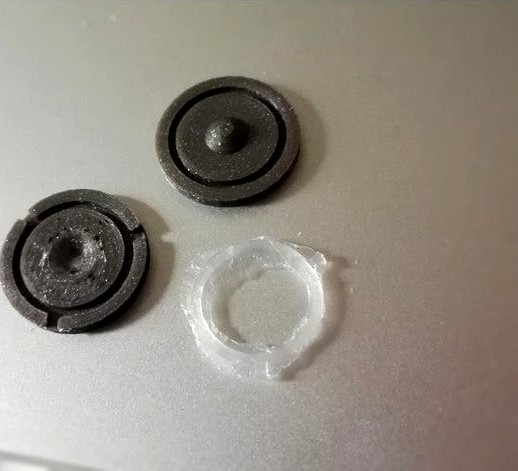
Customizable Mold Maker by hbat38
by Thingiverse
Last crawled date: 3 years, 3 months ago
Hit the Customiser
button to make your custom gasket mould.
Parameters are the inner and outer diameter, the thickness, and the shape of the cross section (see image). If you use the rounded square or ellipse cross section, with thickness set to (Outer diameter - Inner diameter)/2, then you will get a standard O-ring with perfectly circular cross section.
To speed up curing, you can opt to have little venting holes in the mould. It is recommended to use more and/or larger holes in larger moulds, otherwise it may take extremely long for the compound to cure inside the mold. In theory you can also use these holes to do injection moulding: if you set the number of holes to 2, and make them large enough, you can inject silicone through one of the holes until it comes out through the other hole. I tried it and it works, but this will probably only be practical for small gaskets.
The mould relies on a cone to align the two halves. In the ‘advanced’ settings you can tweak the tolerance between the cone and the alignment hole. Ideally, there should be neither horizontal play nor a visible gap between the two halves. The default tolerance works OK for my printer.
Moulds for larger gasket inner diameters have hollowed-out spaces, not only to save filament and printing time, but also to allow excess silicone to spill into those spaces instead of being sandwiched between perfectly flat surfaces which can make it difficult to pry open the mold.
ABS seems the best choice for printing the moulds. Avoid PLA, it sticks to the silicone too well. See the Print Settings section for more details.
As for the silicone material, your best option is probably RTV silicone specially intended for making gaskets, which is available in small quantities (typically from automotive stores). It also exists as a two-component mixture (with separate curing agent) which is ideal for this application, because it cures in a predictable time span even when enclosed. However, such mixtures usually are not available in small quantities.
Regular household silicone compound can work as well and I have successfully used it, but it depends on the specific brand and type. I've had the best results so far with neutral cure silicone. An attempt with acetoxy silicone ended up in failure because it was way too sticky.
How to mold a gasket
The standard method is to print a closed mold in two parts, fill them both, and squeeze them together while gently twisting to reduce the risk of trapped air bubbles. An alternative is to print a single (open) mould, fill it, and scrape off the excess. This limits the gasket shape to being flat (and a bit rough) on one side, but the silicone will cure a lot faster than in a closed mould.
Before injecting the silicone, you should apply grease to the mold to reduce the risk of the gasket ending up stuck to the mould. The grease should not be able to dissolve the plastic nor the compound, or migrate into it. For RTV silicone, grease may not be necessary: check the instructions, or just try out to see what works best. Due to all the possible variations between plastics and silicone types, experimenting will be required.
If you want to be really sure the mold stays together, you can use a gluing clamp or a
printable G-clamp
, but this is generally not necessary.
Unless you're using two-component RTV silicone, you will need some patience to let the silicone cure sufficiently before opening the mould. Single-component compound cures due to contact with humidity. Due to the enclosed shape, contact with moisture in the air will be limited. There are a few things you can try to allow moisture to migrate into the compound more quickly:
Soak the empty mould for several hours before filling, so the plastic itself is already saturated with humidity.
Place the filled mold in a humid environment, for instance a plastic bag or box with a bit of water (do not keep the mould submerged though). To further speed up curing, the environment should be kept warm (around 50°C or 120°F, which is too hot for PLA molds, but as mentioned in the print settings section, PLA is not a good material for these molds anyway).
Even when taking these precautions, it usually takes at least 24 hours for single-component compound to cure. I recommend to wait at least twice the curing time mentioned in the compound's instructions, especially for neutral cure silicone which usually cures much more slowly. Larger moulds or thick gaskets will take even longer.
After removing the gasket from the mould, single-component compound will most likely be too soft for immediate use, and you will need to wait a few more days for it to become sufficiently tough. Again, exposure to moisture may speed up this process.
Depending on the compound, the gasket may shrink significantly while becoming fully cured over the course of days or weeks. If this is the case, and accuracy is important, you should scale up the dimensions a little bit to compensate.
I only tested this for small gaskets. If the model proves unpractical for larger gaskets, contact me and I'll see how I can improve it.
button to make your custom gasket mould.
Parameters are the inner and outer diameter, the thickness, and the shape of the cross section (see image). If you use the rounded square or ellipse cross section, with thickness set to (Outer diameter - Inner diameter)/2, then you will get a standard O-ring with perfectly circular cross section.
To speed up curing, you can opt to have little venting holes in the mould. It is recommended to use more and/or larger holes in larger moulds, otherwise it may take extremely long for the compound to cure inside the mold. In theory you can also use these holes to do injection moulding: if you set the number of holes to 2, and make them large enough, you can inject silicone through one of the holes until it comes out through the other hole. I tried it and it works, but this will probably only be practical for small gaskets.
The mould relies on a cone to align the two halves. In the ‘advanced’ settings you can tweak the tolerance between the cone and the alignment hole. Ideally, there should be neither horizontal play nor a visible gap between the two halves. The default tolerance works OK for my printer.
Moulds for larger gasket inner diameters have hollowed-out spaces, not only to save filament and printing time, but also to allow excess silicone to spill into those spaces instead of being sandwiched between perfectly flat surfaces which can make it difficult to pry open the mold.
ABS seems the best choice for printing the moulds. Avoid PLA, it sticks to the silicone too well. See the Print Settings section for more details.
As for the silicone material, your best option is probably RTV silicone specially intended for making gaskets, which is available in small quantities (typically from automotive stores). It also exists as a two-component mixture (with separate curing agent) which is ideal for this application, because it cures in a predictable time span even when enclosed. However, such mixtures usually are not available in small quantities.
Regular household silicone compound can work as well and I have successfully used it, but it depends on the specific brand and type. I've had the best results so far with neutral cure silicone. An attempt with acetoxy silicone ended up in failure because it was way too sticky.
How to mold a gasket
The standard method is to print a closed mold in two parts, fill them both, and squeeze them together while gently twisting to reduce the risk of trapped air bubbles. An alternative is to print a single (open) mould, fill it, and scrape off the excess. This limits the gasket shape to being flat (and a bit rough) on one side, but the silicone will cure a lot faster than in a closed mould.
Before injecting the silicone, you should apply grease to the mold to reduce the risk of the gasket ending up stuck to the mould. The grease should not be able to dissolve the plastic nor the compound, or migrate into it. For RTV silicone, grease may not be necessary: check the instructions, or just try out to see what works best. Due to all the possible variations between plastics and silicone types, experimenting will be required.
If you want to be really sure the mold stays together, you can use a gluing clamp or a
printable G-clamp
, but this is generally not necessary.
Unless you're using two-component RTV silicone, you will need some patience to let the silicone cure sufficiently before opening the mould. Single-component compound cures due to contact with humidity. Due to the enclosed shape, contact with moisture in the air will be limited. There are a few things you can try to allow moisture to migrate into the compound more quickly:
Soak the empty mould for several hours before filling, so the plastic itself is already saturated with humidity.
Place the filled mold in a humid environment, for instance a plastic bag or box with a bit of water (do not keep the mould submerged though). To further speed up curing, the environment should be kept warm (around 50°C or 120°F, which is too hot for PLA molds, but as mentioned in the print settings section, PLA is not a good material for these molds anyway).
Even when taking these precautions, it usually takes at least 24 hours for single-component compound to cure. I recommend to wait at least twice the curing time mentioned in the compound's instructions, especially for neutral cure silicone which usually cures much more slowly. Larger moulds or thick gaskets will take even longer.
After removing the gasket from the mould, single-component compound will most likely be too soft for immediate use, and you will need to wait a few more days for it to become sufficiently tough. Again, exposure to moisture may speed up this process.
Depending on the compound, the gasket may shrink significantly while becoming fully cured over the course of days or weeks. If this is the case, and accuracy is important, you should scale up the dimensions a little bit to compensate.
I only tested this for small gaskets. If the model proves unpractical for larger gaskets, contact me and I'll see how I can improve it.
Similar models
thingiverse
free

Customizable Gasket Mold Maker by DrLex
...ted this for small gaskets. if the model proves unpractical for larger gaskets, contact me and i'll see how i can improve it.
thingiverse
free

Mould for silicone sleeve by higgsb0son
...stick. then inject silicone using a caulk gun or similar through one of the holes (don't switch holes because...
cg_trader
$5

drop shot fishing lure 5cm mould | 3D
... of the form. fill this with a silicone for molds (rtv). then you will receive a mold for filling with soft silicone (plastisol).
thingiverse
free

Spring-loaded Knobs for Adjustable Glass Bed Bracket by DrLex
...glass bed bracket for the flashforge creator pro and similar printers. these knobs have a silicone gasket incorporated in...
thingiverse
free

FLSun QQ-S Pro Heater Sock Mold by ArketypeDesign
... you find this a challenging and fun project, like i did.
ps- don't forget to do a pid tune on the hotend after installation.
thingiverse
free

E3D V6 Silicone Booth Mold by neo777
... with alcohol 1:2). housing with no holes produces nicer boot. just need longer curing time about 4-6 days depending on humidity!
thingiverse
free

Silicone Painttray (super easy to clean) by Taumelscheibe
...one should also work
use the bottom part of the mold as base for the tray or print the "smallerbase" part (recommended)
thingiverse
free

Injection Coupling by Lawrence
...ed to boil off the solvent. once all the holes are filled and the piece has been set to cure, it should give a satisfactory bond.
grabcad
free

Injection Mold Design
...injection mold design
grabcad
the component for this mould i picked from grabcad.
yellow colour (h7 holes)
red colour (wirecut)
thingiverse
free

Silicone mat mold by Everydecentnameistaken
...really it's the mat of many uses!
all i did was print this, fill to the brim with a two part silicone and let cure for 24hrs.
Customizable
3d_export
$10
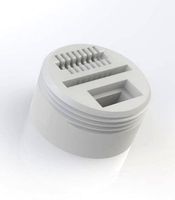
customizable sd port
...customizable sd port
3dexport
customizable sd port
turbosquid
$99

Customizable character
...alty free 3d model customizable character for download as max on turbosquid: 3d models for games, architecture, videos. (1152525)
turbosquid
$1

Customizable Mug
... available on turbo squid, the world's leading provider of digital 3d models for visualization, films, television, and games.
turbosquid
$1

Customizable Spider Mech
... free 3d model customizable spider mech for download as blend on turbosquid: 3d models for games, architecture, videos. (1462055)
turbosquid
$20
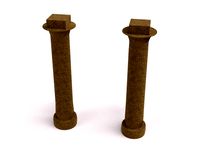
Customizable Egyptian Pillar
...zable egyptian pillar for download as ma, obj, fbx, and blend on turbosquid: 3d models for games, architecture, videos. (1307376)
turbosquid
$75

Fully Customizable Hospital
... available on turbo squid, the world's leading provider of digital 3d models for visualization, films, television, and games.
turbosquid
$20

Customizable Caste Pieces
... available on turbo squid, the world's leading provider of digital 3d models for visualization, films, television, and games.
turbosquid
$15
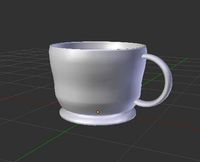
Customizable Tea Cup
... available on turbo squid, the world's leading provider of digital 3d models for visualization, films, television, and games.
turbosquid
free
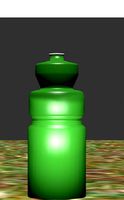
Water Bottle(Customizeable)
... available on turbo squid, the world's leading provider of digital 3d models for visualization, films, television, and games.
3d_export
$49

Book customizable 3D Model
...3dexport
book booshelf novel teach library learn read pages cover fairy tales
book customizable 3d model guitargoa 74240 3dexport
Mold
3ddd
$1

molding
...molding
3ddd
молдинг
molding
3ddd
$1

molding
...molding
3ddd
молдинг , резьба
molding
3d_export
$10

molding
...molding
3dexport
molding, casting, baguette, decoration
3d_export
$10

molding
...molding
3dexport
molding, casting, baguette, decoration
3d_export
$10

molding
...molding
3dexport
molding, casting, baguette, decoration
3d_export
$10

molding
...molding
3dexport
molding, casting, baguette, decoration
3d_export
$10

molding
...molding
3dexport
molding, casting, baguette, decoration
3d_export
$10

molding
...molding
3dexport
molding, casting, baguette, decoration
3d_export
$10

molding
...molding
3dexport
molding, casting, baguette, decoration
design_connected
$16

Mold
...mold
designconnected
eternit mold computer generated 3d model. designed by charlot, michel.
Maker
3d_ocean
$17

Coffee Maker
...coffee maker
3docean
breakfast coffee drip electric maker morning
detailed coffee maker and a plug.
3ddd
$1
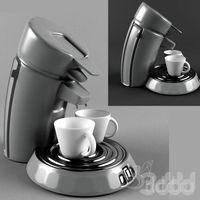
coffee maker
...coffee maker
3ddd
кофемашина
coffee maker
3d_export
$10

chapati maker
...chapati maker
3dexport
it is a indian traditional chapati maker
archibase_planet
free

Coffee maker
...aker
archibase planet
percolator coffee-machine coffee maker
coffee maker - 3d model (*.gsm+*.3ds) for interior 3d visualization.
archibase_planet
free
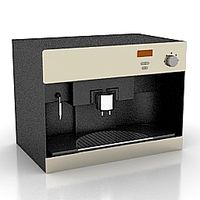
Coffee maker
...aker
archibase planet
percolator coffee-machine coffee maker
coffee maker - 3d model (*.gsm+*.3ds) for interior 3d visualization.
archibase_planet
free
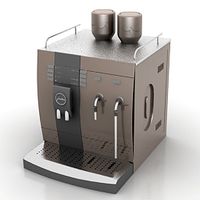
Coffee maker
...aker
archibase planet
percolator coffee-machine coffee maker
coffee maker - 3d model (*.gsm+*.3ds) for interior 3d visualization.
archibase_planet
free

Сoffee maker
...er
archibase planet
coffee maker percolator coffee-machine
сoffee maker n020112 - 3d model (*.3ds) for interior 3d visualization.
archibase_planet
free
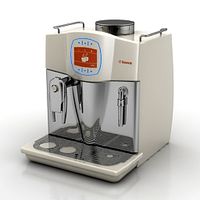
Coffee maker
...aker
archibase planet
coffee maker percolator coffee-machine
coffee maker - 3d model (*.gsm+*.3ds) for interior 3d visualization.
3ddd
$1

Juice Maker
...juice maker
3ddd
соковыжималка
fully detailed kenwood juice maker
archibase_planet
free

Coffee maker
...hibase planet
coffee maker percolator coffee-machine
coffee maker n140611 - 3d model (*.gsm+*.3ds) for interior 3d visualization.
